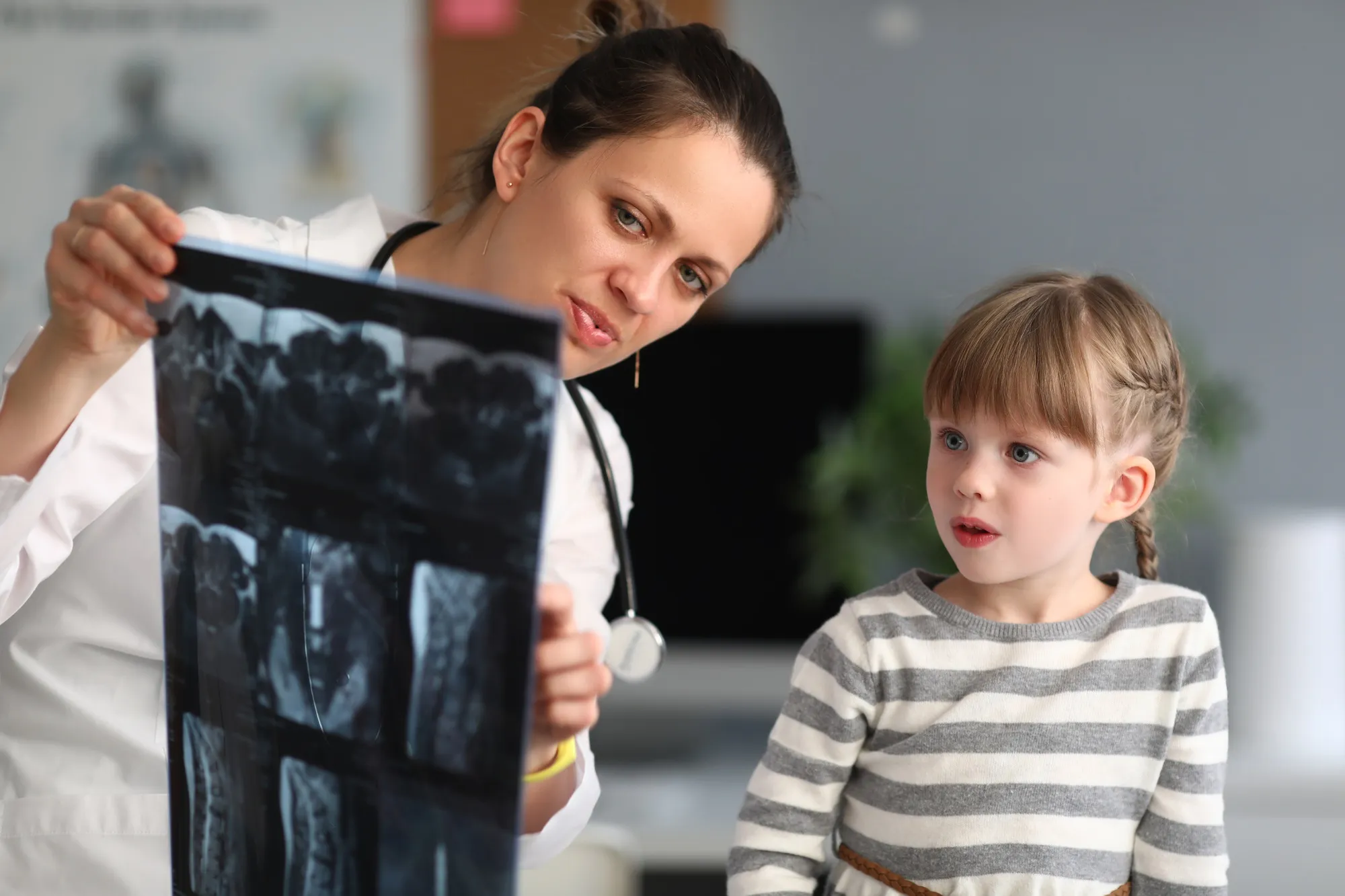Introduction
Congenital myopathies, a heterogeneous group of inherited neuromuscular disorders, traditionally pose a significant diagnostic challenge due to their varied clinical presentations and genetic backgrounds. Myoimaging, specifically muscle MRI (Magnetic Resonance Imaging), has emerged as a vital tool in the diagnosis and management of these conditions, revolutionizing the approach to care for affected individuals. In an illuminating article published in Seminars in Pediatric Neurology, Carlier and Quijano-Roy (2019) delve into the application of myo-MRI and the pivotal role of pattern recognition in honing diagnostic accuracy and developing therapeutic strategies. This article aims to discuss myoimaging’s evolving role in congenital myopathies, emphasizing the synergy between imaging technologies and genetic advances.
Understanding Congenital Myopathies
Congenital myopathies are a diverse array of muscle disorders present from birth, manifesting as muscle weakness, hypotonia, and varying degrees of motor developmental delay. While the clinical heterogeneity of these disorders has long been recognized, advances in molecular genetics have underlined their vast genetic diversity. The accurate characterization of these myopathies is essential not only for diagnosis but also for prognostication and genetic counseling.
The Role of Myo-MRI
Myo-MRI techniques have seen significant advancement, notably in the recognition of distinctive imaging patterns correlating to specific myopathies. As Carlier and Quijano-Roy (2019) report, myo-MRI facilitates the visualization of abnormalities in muscle signal, volume, and texture that are characteristic of congenital myopathies. For comprehensive evaluation, whole-body imaging techniques are preferred, particularly when the disease involves axial or diffuse muscle groups, including the tongue, masticator, neck, or trunk muscles.
In adapting to the intricacies of these diseases, the requirement for tailored myo-MRI protocols is evident. The imaging needs to deliver high spatial resolution to detect subtle changes while keeping the examination time reasonable for pediatric patients.
Technological Developments and Diagnostic Protocols
As the technique has evolved, combining qualitative and quantitative analyses has become pivotal in monitoring disease progression over time. By utilizing technical evolutions in imaging, it is possible to follow subtle changes closely and adjust treatment protocols accordingly. The radiologist’s expertise is crucial in setting the appropriate parameters to balance examination time with the necessary detail to capture these variations, especially in the pediatric population.
With muscular involvement varying significantly across different subtypes, myo-MRI pattern recognition assists in narrowing down differential diagnoses. Recognizable image profiles, such as specific patterns of muscle involvement, have become associated with various genetic mutations causing congenital myopathies. This correlation enables a more pointed approach to subsequent genetic testing, thus expediting the diagnostic process.
Integrating Genetic Diagnosis
Carlier and Quijano-Roy (2019) highlight the influence that statistical tools, such as algorithms and heatmaps, can have on interpreting next-generation sequencing (NGS) data. When combined with myoimaging, these tools enhance the precision of genetic diagnoses. The detailed imaging profiles provided by myo-MRI can guide geneticists in identifying the genes most likely responsible for the observed phenotype, streamlining genetic analysis workflows.
The article also acknowledges the potential role of myo-MRI outcomes in characterizing natural history and clinical trials for new therapies. As the understanding of congenital myopathies deepens, the opportunity to employ these imaging biomarkers as surrogate endpoints could advance therapeutic development and evaluation substantially.
Conclusion
The work by Carlier and Quijano-Roy (2019) offers the medical community valuable insights into the application of myoimaging in congenital myopathies. At the juncture of clinical and genetic understanding lies a powerful diagnostic tool in myo-MRI, not only shaping the initial approach to ambiguous muscular symptoms in children but also informing ongoing management and therapeutic intervention measures.
As we move forward in the era of personalized medicine, integrating myo-MRI into the diagnostic algorithm for congenital myopathies represents a paradigm shift. It allows for a precise, non-invasive look into the functional anatomy of the muscles affected by genetic mutations, providing clarity to families and clinicians alike.
References
1. Carlier, R.-Y., & Quijano-Roy, S. (2019). Myoimaging in Congenital Myopathies. Seminars in Pediatric Neurology, 30, 30-43. doi: 10.1016/j.spen.2019.03.019
2. Jungbluth, H., Sewry, C. A., & Muntoni, F. (2011). Core myopathies. Seminars in Pediatric Neurology, 18(4), 239–249. doi:10.1016/j.spen.2011.10.005
3. Mercuri, E., & Muntoni, F. (2013). Muscular dystrophies. The Lancet, 381(9869), 845–860. doi:10.1016/S0140-6736(12)61897-2
4. North, K. N., Wang, C. H., Clarke, N., Jungbluth, H., Vainzof, M., Dowling, J. J., … & Moore, S. A. (2014). Approach to the diagnosis of congenital myopathies. Neuromuscular Disorders, 24(2), 97–116. doi:10.1016/j.nmd.2013.11.003
5. Quijano-Roy, S., & Carlier, R.-Y. (2015). Whole-Body Muscle MRI in Congenital Myopathies and Muscular Dystrophies. Neurology, 6, 98–108.
Keywords
1. Congenital myopathies diagnosis
2. Myo-MRI in neuromuscular disorders
3. Pediatric muscle imaging
4. Genetic heterogeneity in myopathies
5. Muscle MRI pattern recognition
